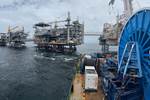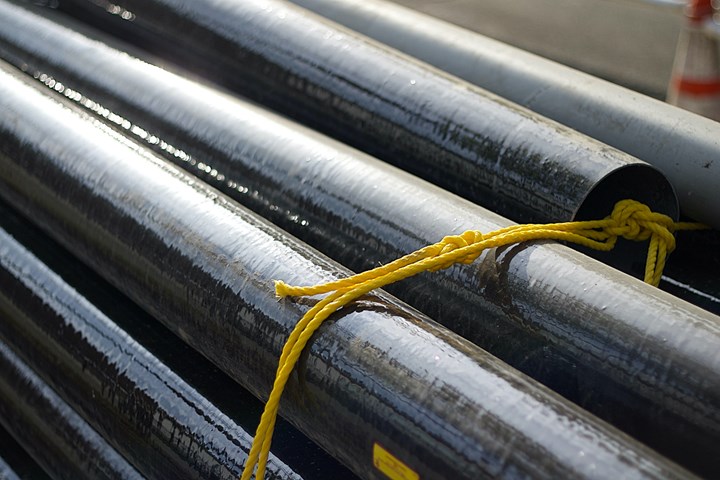OCSiAl graphene nanotubes enhance dielectric properties of GFRP pipes
Nanotubes grant permanent, uniform anti-static properties and are compatible with most resin types and manufacturing processes, enabling composite pipe use in high-risk facilities.
OCSiAl (Luxembourg and Columbus, Ohio, U.S.) graphene nanotubes have recently facilitated the use of glass fiber-reinforced polymer (GFRP) pipes at high-risk oil and gas, chemical and production facilities.
According to the company, graphene nanotubes dispersed in resin grant permanent and uniform anti-static properties to pipes and ensure safety from sparks, a frequent cause of ignition and explosion. The attraction of this solution lies in the simplicity of granting anti-static properties to composite materials and its uniformity. Previously, the usual method was to coat the fiberglass surface with an anti-static coating, to apply a carbon fiber veil as a separate layer or to add carbon black inside the resin.
“The coating, unfortunately, is subject to abrasion loading and other durability issues and there is a potential need for further recoating,” Hendrik Janssen, technical support engineer for EMEA, OCSiAl Group, says. “Carbon [fiber] veils or rovings can require more labor and production time, and can also be challenging to produce rotating parts with the required quality. Also, carbon black leads to degradation of mechanical properties and unwanted dust formation.”
The practical solution, welcomed by pipe manufacturers, is to replace 4–15% of carbon black with 0.02–0.05% of graphene nanotubes to achieve a permanent and stable level of resistivity of 104 – 106 Ohm*cm in GFRP pipes. Nanotubes reportedly create a homogeneous and stable conductive network inside epoxy, polyester and vinyl ester that ensures that every part of a pipe can dissipate dangerous static charge and do this throughout the whole service life of the pipe. Nanotube concentrates by OCSiAl based on various polymer carriers are easily compatible with key manufacturing technologies, such as sheet molding compound (SMC), bulk molding compound (BMC), spray-up, filament winding, pultrusion and hand layup.
“The value proposition nanotubes bring is two-fold,” Janssen adds. “On the one hand, nanotubes facilitate a wider use of composite pipes, which eliminate the corrosion problem, slash the cost of infrastructure and offer CO2 savings compared to the installation and maintenance of steel pipes. On the other hand, nanotubes significantly improve the safety of the high-risk facilities, which is crucial for the oil and gas industry, chemical plants and mines.”
Related Content
-
Bioabsorbable and degradable glass fibers, compostable composite parts
ABM Composite offers sustainable options and up to a 60% reduction in carbon footprint for glass fiber-reinforced composites.
-
TU Munich develops cuboidal conformable tanks using carbon fiber composites for increased hydrogen storage
Flat tank enabling standard platform for BEV and FCEV uses thermoplastic and thermoset composites, overwrapped skeleton design in pursuit of 25% more H2 storage.
-
JEC World 2023 highlights: Innovative prepregs, bio-resins, automation, business development
CW’s Jeff Sloan checks in with JEC innovations from Solvay, A&P, Nikkiso, Voith, Hexcel, KraussMaffei, FILL, Web Industries, Sicomin, Bakelite Synthetics, Westlake Epoxy and Reliance Industries.
















